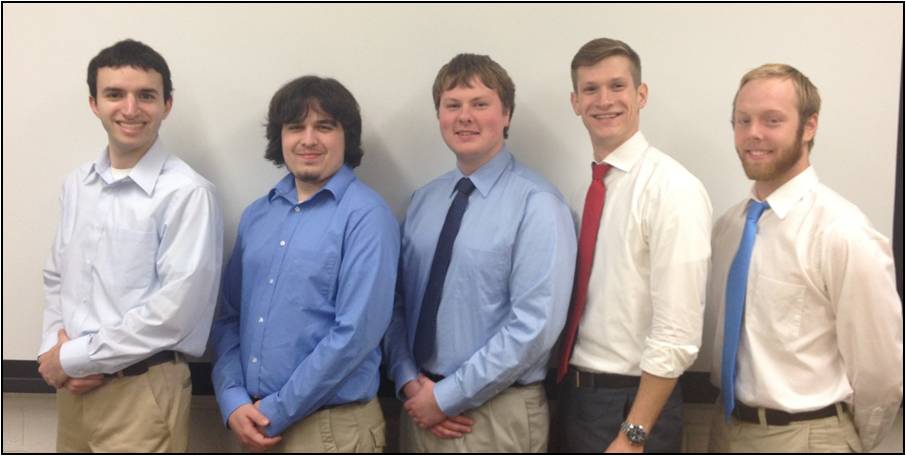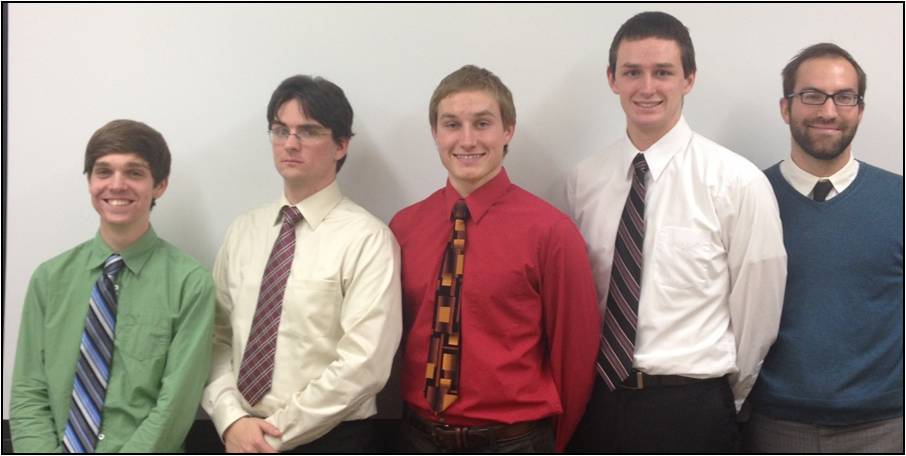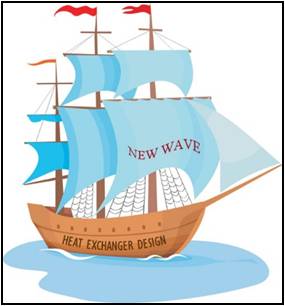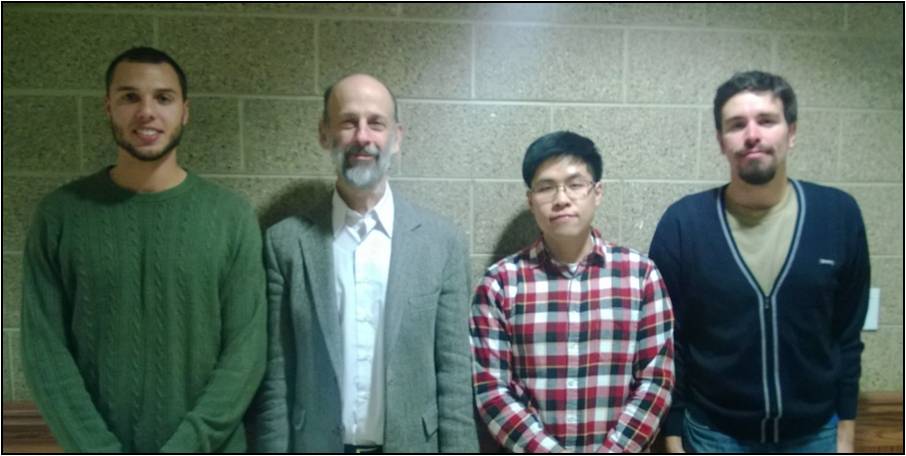

Team Entries
True View

Designed by: Paul Frisch, Alex Goff, Brandon Kryger, Bob Lacayo, and Matt Patterson
The True View is a portable and cost effective self-leveling camera mount that attaches to the head of a standard tripod, and functions with a wide variety of camera models. It is designed to keep the camera level regardless of any change in the location or orientation of the tripod. The True View is also equipped with basic tripod head functions, such as panning and locking, so that the photographer can snap a photo in any direction without worry of an unleveled shot.
Greater Utility Cart

Designed by: Sam Balch, Stuart Gerger, Dan Osgood, Casey Sennott, and Dylan Vann
The Greater Utility Cart is a collapsible, portable utility device for urban residents. When expanded, the cart provides ample storage space for laundry, groceries, or other shopping goods. The incorporation of unconventional tri-wheels allows the Greater Utility Cart to easily scale stairs and curbs, enabling urban users to navigate public transportation and other obstacles.When collapsed, the cart reduces to the size of a backpack and is fully wearable, retaining a large internal storage space. Water-resistant fabric, storage compartments, and a stylish exterior ensure that the user need not sacrifice a fashionable and utilitarian backpack for enhanced carrying capacity.

First Touch

Designed by: Ryan Anderson, Daniel Belongia, Paul Durette, and Sam Fedenia
First Touch designed a hydraulic actuated nose landing gear for Cozy Mark III, Cozy Mark IV, Vari-EZ, and Long-EZ experimental aircraft, all of which are built from scratch and are designed by Burt Rutan. The landing gear features an oleo-pneumatic strut and it is designed to fit within the existing bulkhead on Rutan-derivative aircraft. The hydraulic gear is easier to use and provides more damping than the existing hand-crank nose gear. Several mechanisms are included in the design to ensure the safety of the pilot and passengers.
Sound Cleaning

Designed by: Tim Carlson, Stacy Ladwig, Joe Schoneman, and Tyler Sinotte
Sound Cleaning’s BumbleB is a dish cleaning device designed to provide the power of a dishwasher with the convenience of a handheld dishwand. Using the power of ultrasonic cavitation, the BumbleB allows the user to tackle an entire sink full of extremely dirty dishes with minimal time and effort. The dishwand's key component, a 40 kHz piezoelectric transducer, receives an electrical signal from an external power supply unit located on the countertop. A stepped horn attached to the working end of the transducer amplifies the vibrations, thus enhancing the dishwand's cleaning power. The vibration of the horn works in combination with a detachable sponge head to effectively and efficiently clean dishes. With its progressive concept and bold design, the BumbleB is a product for the kitchen of the future.
Shrex

Designed by: Ethan Blakley, Amanda Blochowicz, Jaroslav Brestan, Dayton Shepard, and Matt Zeismer
3D printing is an upcoming industry that allows the user to make any 3D solid object out of plastic from a digital model. The plastic material used to print the part comes as a 3mm or 1.75mm filament on a spool. A 1kg spool of plastic material can cost as much as $35, and a 1kg block or 1kg of pellets of the same material can cost $8.SHREX addresses the price difference by using a two-step desktop device that can take an ABS part and turn it into 3mm filament ready to use in your 3D printer. The first step in SHREX is a shredder that can take an ABS block or past printed object and shred it to a pellet size part. The second step is an extruder that can take those shredded parts or purchased ABS pellets and extrude a 3mm filament to be used in a 3D printer. SHREX will allow a user to recycle unwanted printed parts as well as save money on pricy filament.

New Wave

Designed by: Cameron Gilanshah, Dongmoon Han, Ken Katz, and Jacon Maas
Shell and tube heat exchangers are used aboard naval ships to cool lubricating oil. Seawater is used as the cooling fluid due to its abundance, however, seawater fouls heat exchanger surfaces. This fouling eventually requires the heat exchanger to be shut down for cleaning. The New Wave Naval Heat Exchanger is cleaned by pulling scuff balls attached to cords through the seawater tubes. These balls remove fouling, growth, and residue inside the tubes which improves flow and heat exchanger efficiency. New Wave’s design allows the heat exchanger to be manually cleaned while operating, which eliminates the need for long periods where the heat exchanger is offline, and consequently the ship to be immobile. This provides naval fleets with an advantage in battle and may help win wars and save lives. University of Wisconsin-Madison Department of Engineering
Physics
University of Wisconsin-Madison Department of Engineering
PhysicsMadison, Wisconsin
Revised: 12/04/2013